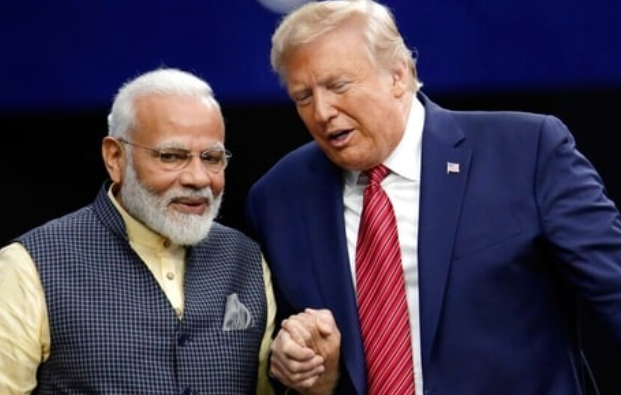
In under 24 hours, the global diplomatic atmosphere has shifted dramatically as U.S. President Donald Trump launched a scathing series of attacks on BRICS nations, particularly targeting Russia and India. Using strong and controversial language, Trump accused India and Russia of sustaining "dead economies" and announced a new wave of trade restrictions that could trigger a broader trade war.
The current friction stems from Trump's recent declaration of a 25% tariff and an additional 25% penalty on Indian imports. The announcement has rattled the Indian market and sparked debate among economic and political analysts. But what stands out even more is the tone of Trump's public statements—his criticism appears to be directed more at India's ongoing relationship with Russia than at trade matters alone.
In a statement published on his Truth Social platform, Trump wrote, “I don’t care what India does with Russia. I only care how they are working together to drag down their already dead economies.” The inflammatory language has left many wondering whether Trump’s true aim is to isolate Russia economically, using India's growing partnership with Moscow as a pressure point.
India, for its part, has responded firmly. Officials have said that national interest will not be compromised under any circumstances. India continues to maintain its sovereign right to engage in trade relationships that suit its developmental and strategic interests.
The latest tariff and penalty come at a time when India is becoming a tough negotiator for the United States. Over the past few years, India has been actively diversifying its global trade partnerships. The recent finalization of a Free Trade Agreement (FTA) with the United Kingdom and the uninterrupted purchase of oil from Russia over the last three years underscore this strategy. Despite sanctions and pressure from the European Union, including a ban on one of India’s oil firms, India has continued its energy imports from Russia unabated.
This consistent trade partnership with Russia is reportedly one of the main triggers behind Trump's aggressive stance. The U.S. administration appears increasingly uneasy with India's rise as an independent and assertive global economic player. Trump's actions reflect mounting frustration over America's inability to gain a dominant foothold in the Indian market.
Ironically, the very economy that Trump has called "dead" is the same one into which American companies are eager to enter. From technology giants to defense contractors, many American businesses see India as a lucrative and strategic market. Trump's tariff offensive, therefore, appears contradictory—on one hand criticizing India, while on the other hand, American investors look for greater access.
Furthermore, Trump's recent remarks may also be intended to send a broader signal to the BRICS bloc, especially ahead of upcoming multilateral discussions. The U.S. administration has shown growing anxiety over BRICS’ increasing influence in global geopolitics and trade. With India playing a central role in this group—alongside Russia, China, Brazil, and South Africa—Trump's commentary may be aimed at undermining BRICS unity by driving wedges between member states.
However, India has so far shown resilience and strategic clarity. Its stance remains consistent: national interest comes first. New Delhi’s response to these tariffs and penalties will likely involve measured diplomatic and economic strategies. India has already made it clear that it will not allow external pressure to dictate its foreign policy or trade decisions.
Trump’s targeting of India’s economic ties with Russia could also have unintended consequences for America’s image in the Global South. Several countries in Asia, Africa, and Latin America are watching how the U.S. engages with India—a fellow democracy and emerging economic powerhouse. If seen as punitive or heavy-handed, Washington’s approach could backfire and push more nations toward alternate alliances.
In summary, President Trump's 25% tariff and penalty against India mark a significant escalation in trade tensions. His direct criticism of India and Russia’s economies signals a deeper frustration with India's independent foreign policy and its growing role in global trade outside of U.S. influence. Whether this is a temporary outburst or a sign of long-term strategic divergence remains to be seen.
India now stands at a crossroads—balancing global partnerships, domestic priorities, and strategic autonomy. The next few weeks could define not just India–U.S. trade relations, but the future of global alignments in a multipolar world.
Disclaimer:
This article is based on publicly available news reports, political statements, and current global developments. The views expressed by political leaders mentioned in the article are their own and do not reflect the views of this blog. This content is intended for informational and analytical purposes only and should not be interpreted as financial, political, or diplomatic advice. Readers are encouraged to verify facts and follow official government sources for updates.




